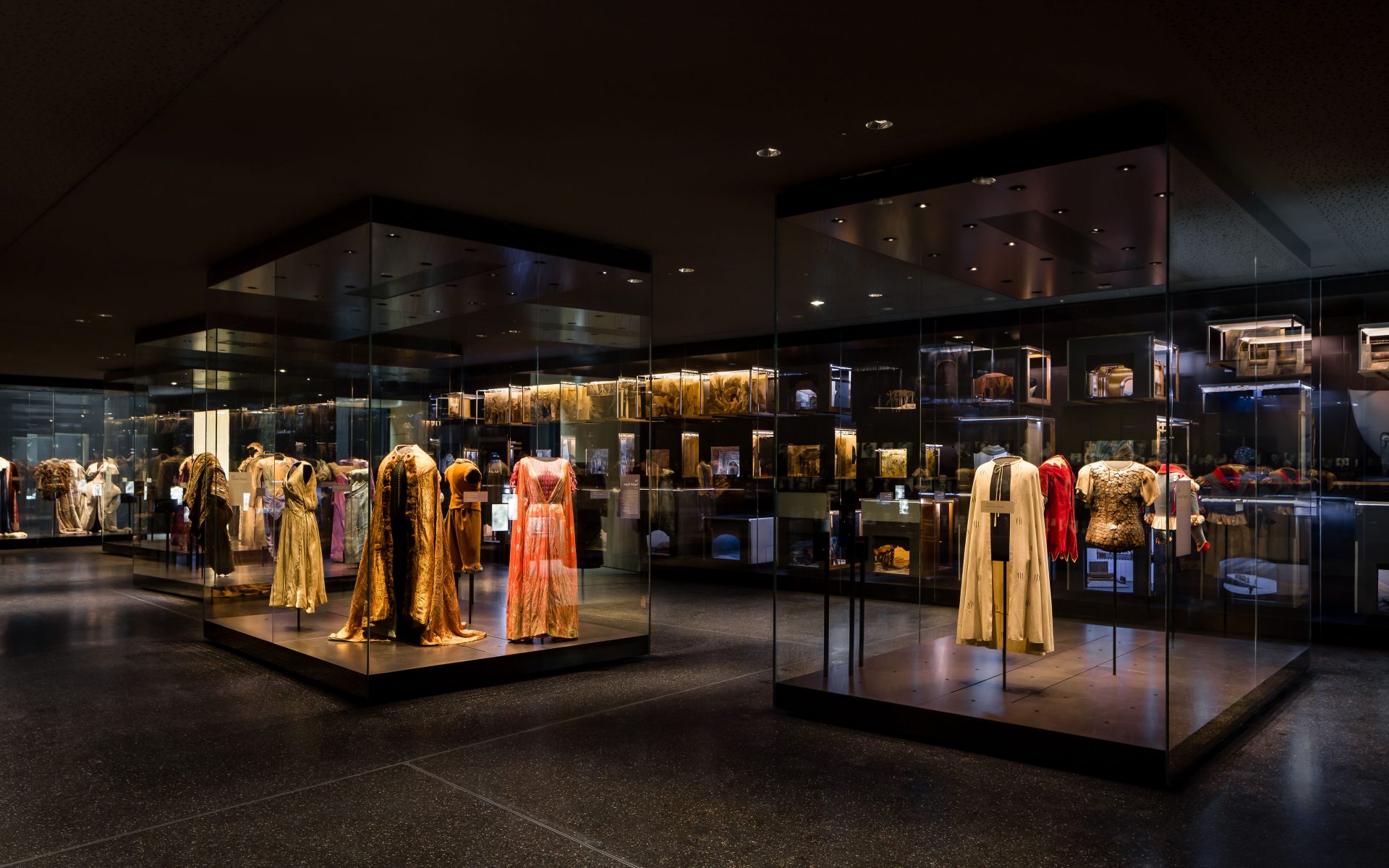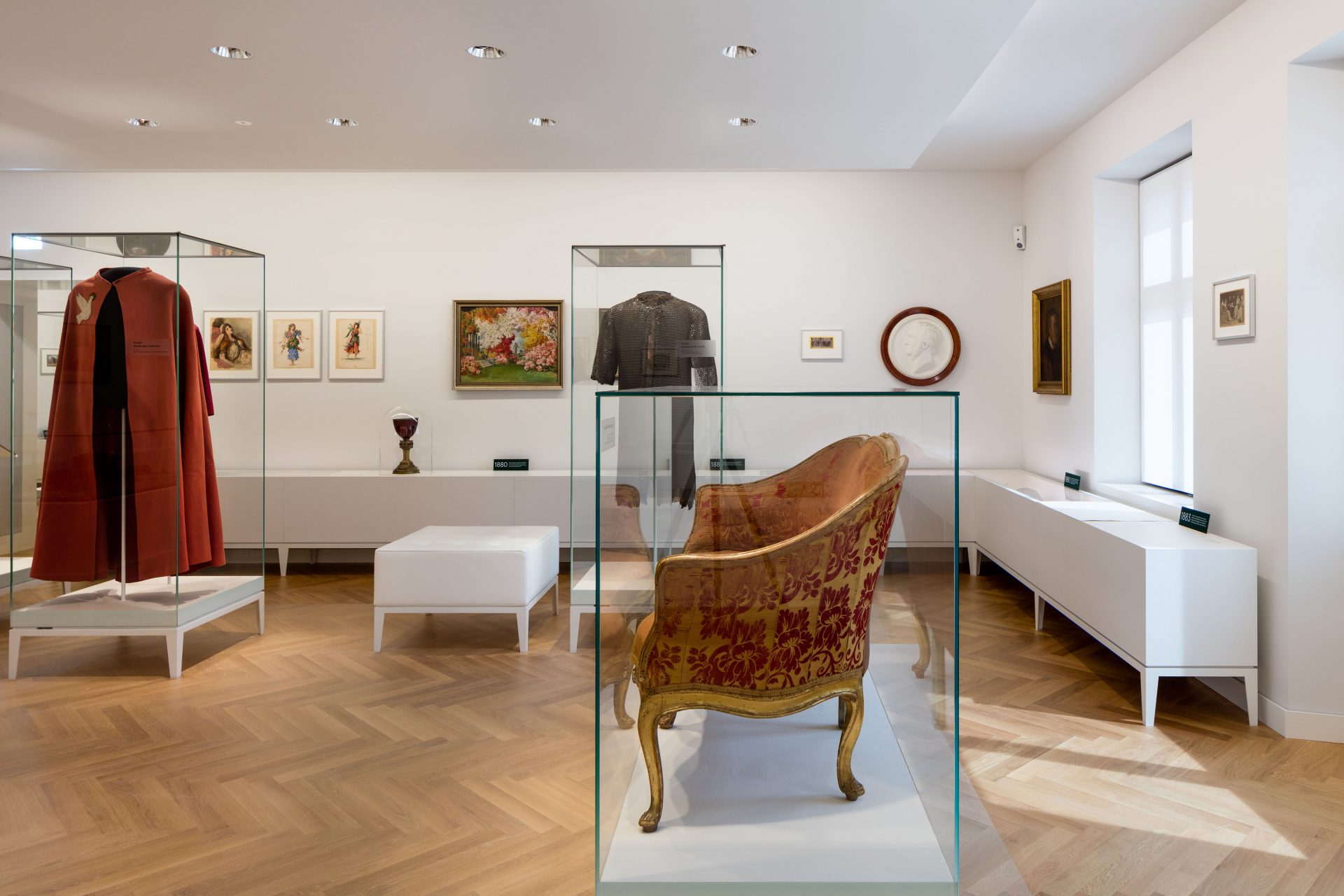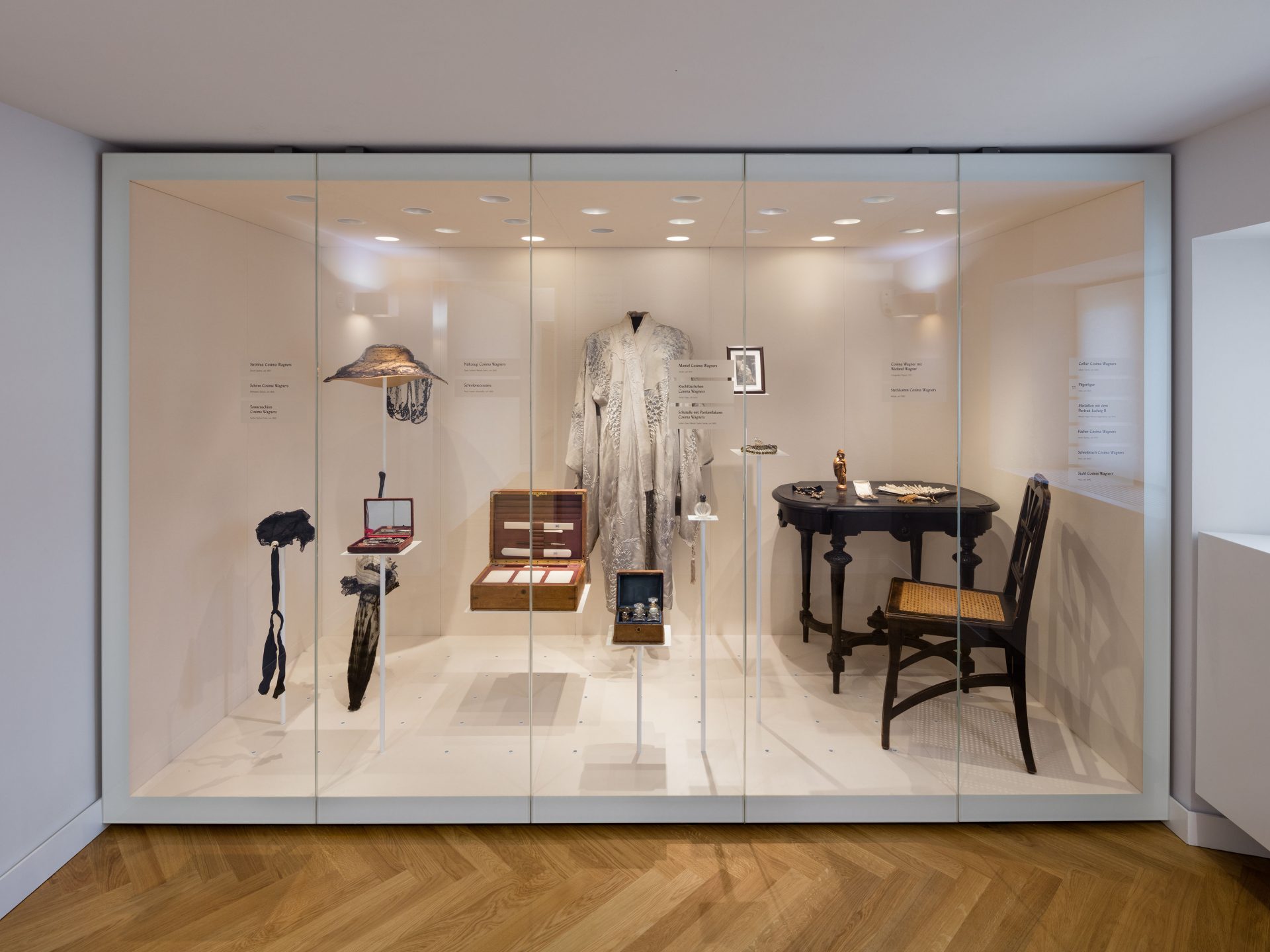
Richard Wagner Museum
The Richard Wagner Museum in Bayreuth
As the domain of the late composer Richard Wagner, Bayreuth has risen to worldwide fame as his devotees’ pilgrimage site. The former residence is part of the museum that now houses the national Richard Wagner collection. Here, the visitor is immersed in his private life and creative work, strikingly displayed in a furnished living environment and showcases with concealed, adjustable LED lighting. The historic Villa Wahnfried contains object luminaires illuminating the envelope, while recessed, focused lighting serves the new extension with its glazed volume that blends into the adjacent park.
All areas of the new building that are not exhibition-related are illuminated with flush ceiling recessed luminaires. To ensure continuity between the temporary and permanent exhibition rooms, the exclusive use of LEDs was mandatory.
While the temporary exhibition space on the ground floor contains ceiling slots with integral electric tracks for the concealed adaptation of fully adjustable LED accent lights, the basement hosts the permanent exhibition on the history of the festival. In an obvious stage analogy, the room’s color scheme is kept dark and the display is rich in contrast. Floor-to-ceiling showcases display spectacular costumes and stage set models, dramatically orchestrated by light. Integrated in the glass cabinet ceilings are regularly spaced cylindrical recesses. Each contains a rotatable bracket for the flexible adaptation of miniature LED spot lights, fully adjustable by virtue of a ball joint. Various optical accessories allow for glare control and diverse light distributions.
In Villa Wahnfried’s great entrance hall, refurbished historicizing wall sconces from the building stock are installed. Together with the great chandelier in the adjacent salon, they were refurbished to fit current technical standards and have been re-lamped with contemporary LED lamps. Towards the top, the hall tapers into a gallery, spanned by a skylight. Across the glazing in the attic above, generous amounts of daylight enter the space. At night, the opalescent skylight becomes a friendly light-active surface by means of reflector light strips that are mounted above.
The basement is dedicated to Wagner’s world of music. The dark space’s centerpiece is the score manuscript on display in a large show case. Richard Wagner’s accent-lit bust, mounted to the rotunda wall behind, appears to float above the score. The golden rotunda is lined with a gauze curtain, illuminated by a concealed graze light channel that imbues the fabric with a luminous, immaterial transparency.










